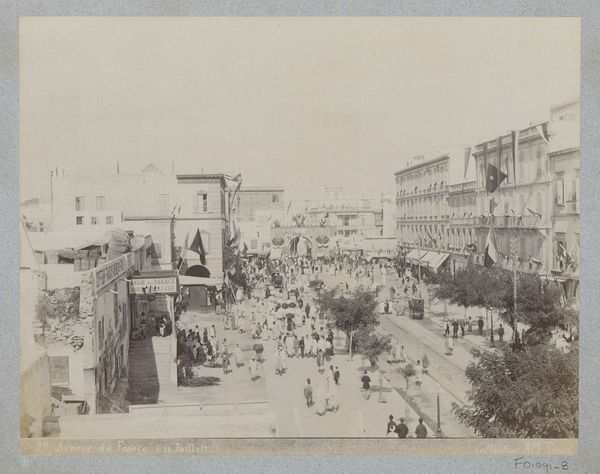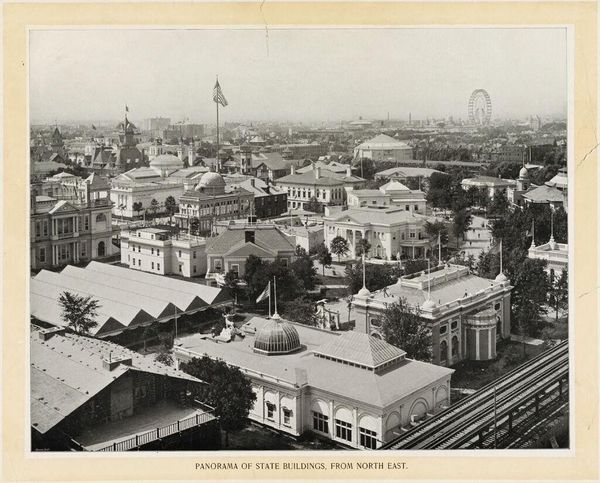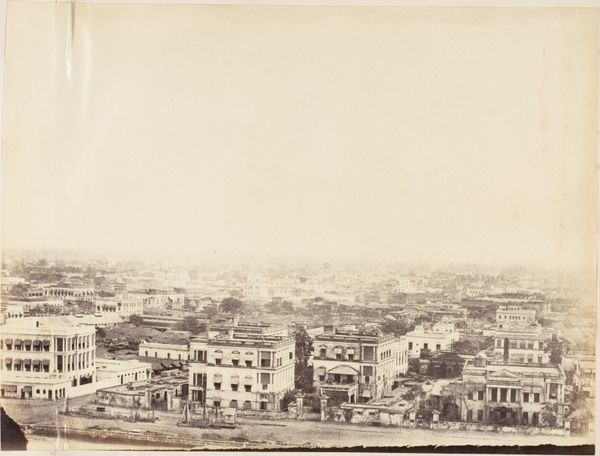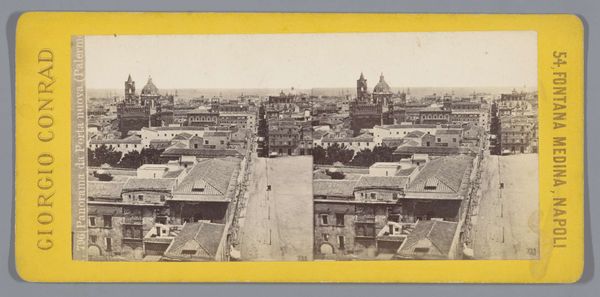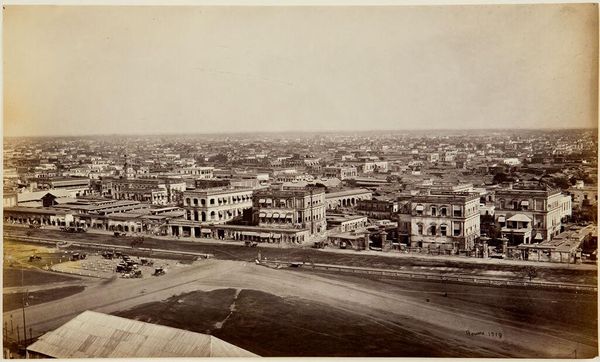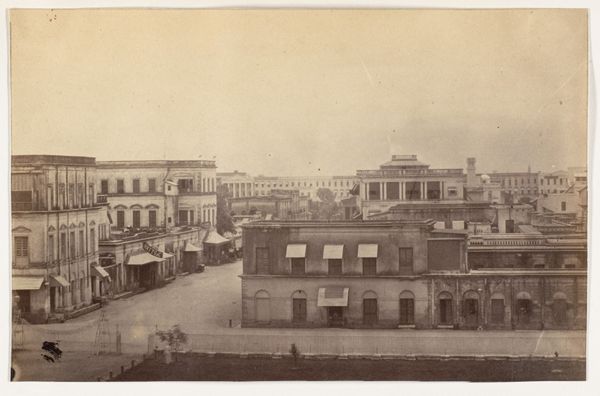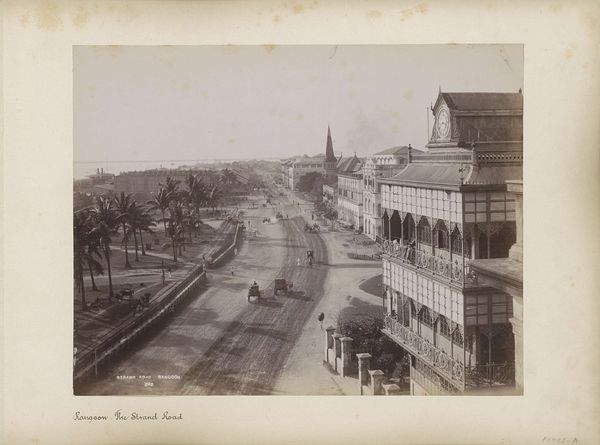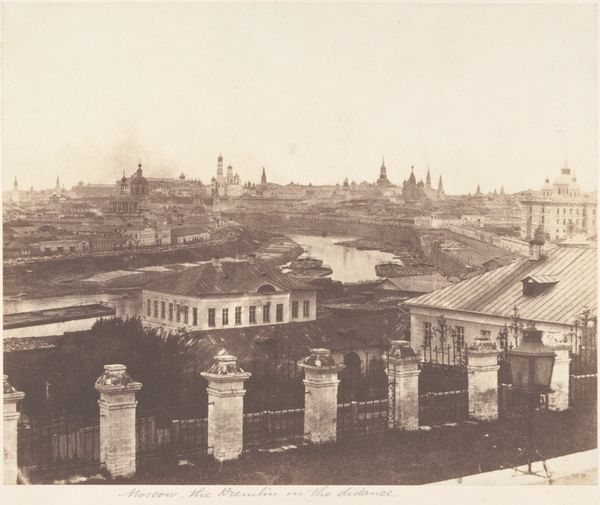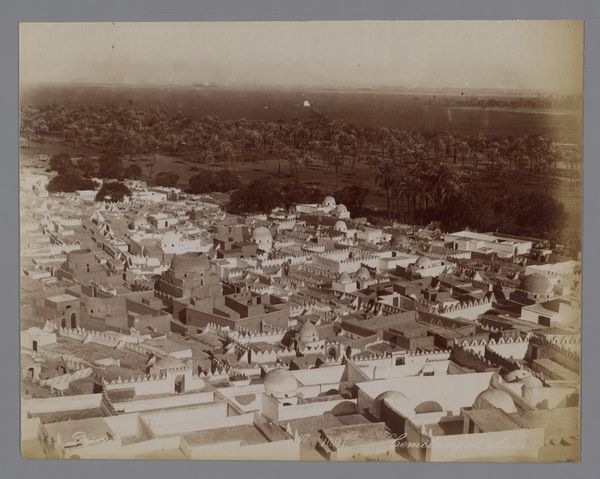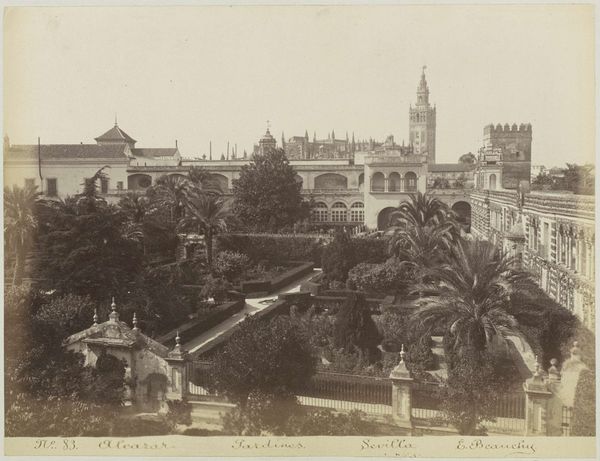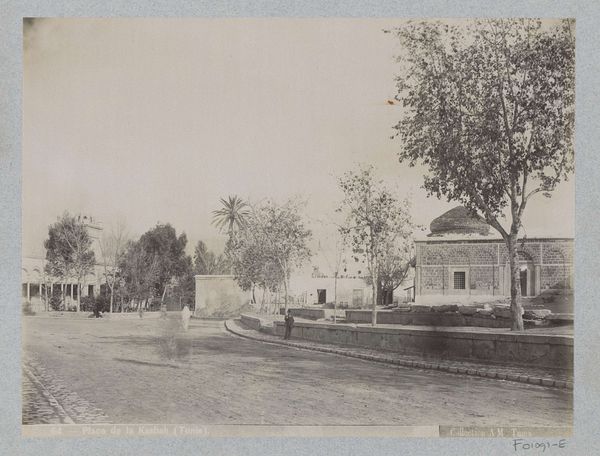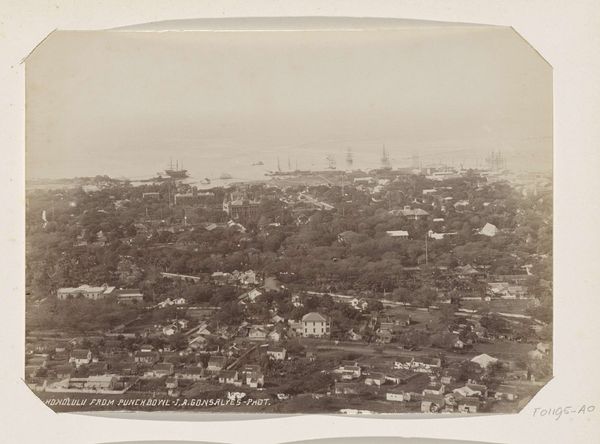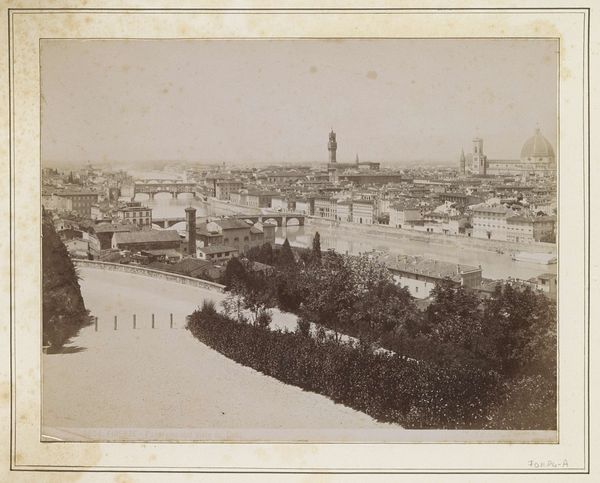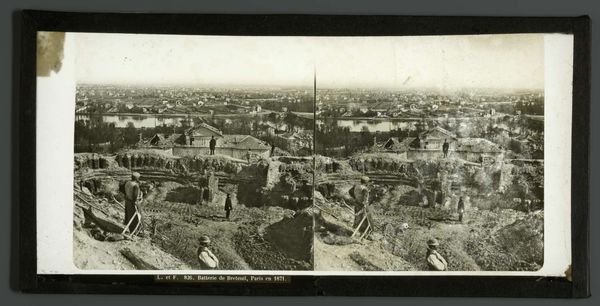
Bird's Eye View of State Buildings at the White City, World's Columbian Exposition 1894
0:00
0:00
Dimensions: image: 28 x 35.6 cm (11 x 14 in.) sheet: 35.6 x 44.4 cm (14 x 17 1/2 in.)
Copyright: CC0 1.0
Curator: William Henry Jackson’s photograph, "Bird's Eye View of State Buildings at the White City, World's Columbian Exposition," presents a fascinating vista. It's held at the Harvard Art Museums. Editor: The photograph evokes a feeling of aspiration and grand ambition, almost utopian. The composition, with the buildings receding into the distance, conveys an immense scale. Curator: Indeed. The White City was designed to showcase America's progress and modernity during the World's Columbian Exposition. It's important to remember this was also a form of cultural propaganda. Editor: The consistent use of white buildings surely held symbolic weight. White traditionally represents purity, innovation, and a clean break from the past. Yet, the absence of diverse hues also suggests a certain uniformity. Curator: Precisely. It’s a constructed vision of what America wanted to project—a carefully curated image of power and progress, often masking underlying social issues of the time. Editor: Still, the sheer scale of the architecture, captured from this elevated perspective, can't help but inspire a sense of awe. It symbolizes an era of immense hope and ambition. Curator: Yes, though we must critically examine that era's vision, its inclusivity, and lasting consequences. Editor: A vital point, offering a much richer understanding of the photograph's lasting cultural impact.
Comments
No comments
Be the first to comment and join the conversation on the ultimate creative platform.
